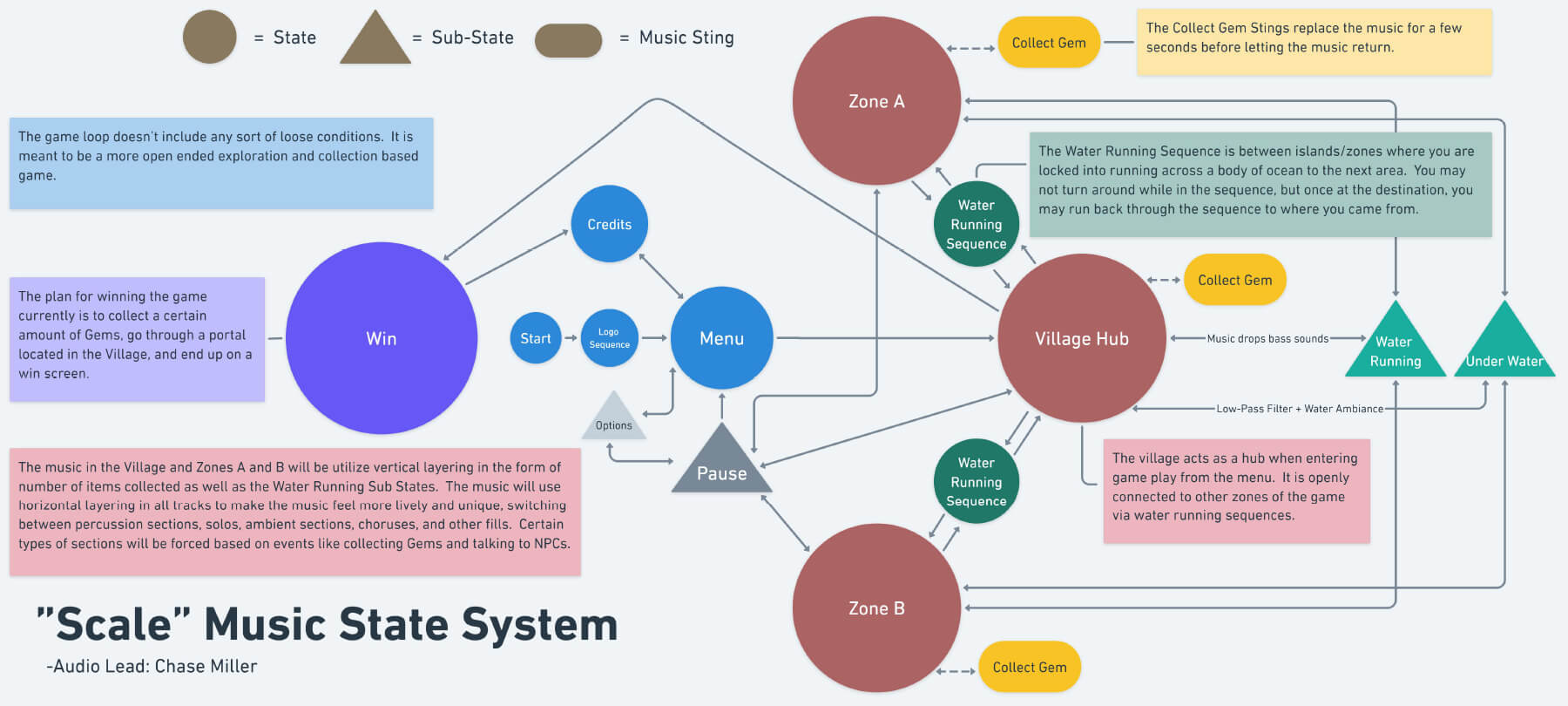Exercise 3: Game Music Analysis & Adaptive Design
Project Overview
Building on Level 6 – Compose Yourself!: The Art of Composing for Games, this project asks you to analyze how games use linear and non-linear music, identify adaptive techniques, and design a music interaction map for a hypothetical level. You will present your findings to the class in a timed presentation.
Learning Outcomes
- Identify differences between linear and non-linear scoring in games
- Examine and label uses of loops, branching, and transitions with timestamps
- Recognize production and design factors that shape adaptive scoring choices
- Apply vertical (layering) and horizontal (re-sequencing) concepts by designing a cohesive music system for gameplay
Deliverables
Class Presentation (7–8 minutes + 2 minutes Q&A) You may present in any format (slides, table, video capture, or document), but include:
Analysis – 4 Examples
- For each example, show:
- Function of the music: mood/tone, time/place, location identity, character, pace, immersion
- Techniques from: vertical layering, crossfade, phrase branching, musical demarcation, bridge, stinger, horizontal re-sequencing
- You don’t need to show every technique in each example, but identify at least one per example.
- For each example, show:
Music Interaction Map (Design)
- Diagram of a hypothetical level’s music system, showing:
- States (e.g., Explore → Suspicion → Combat → Victory → Explore)
- Vertical stems per state and when they enter/exit
- Horizontal transitions and techniques used
- Rules for timing, fade lengths, and triggers
- Tools:
- Google Drawings — free, collaborative diagramming app within Google Workspace.
- diagrams.net (Draw.io) — robust, open-source diagram editor, works in-browser or offline.
- Diagram of a hypothetical level’s music system, showing:
 Example of a clear interaction map
Example of a clear interaction map
Assessment Rubric (25 Points)
| Criterion | Points | Description |
|---|---|---|
| Analysis examples | 14 | 4 examples with clear function and technique identification; accurate, insightful reasoning |
| Music Interaction Map (Design) | 8 | Clear, functional state diagram with both vertical and horizontal elements; well-labeled and readable |
| Presentation clarity and delivery | 3 | Clear speech, logical flow, timing; uses AV effectively |